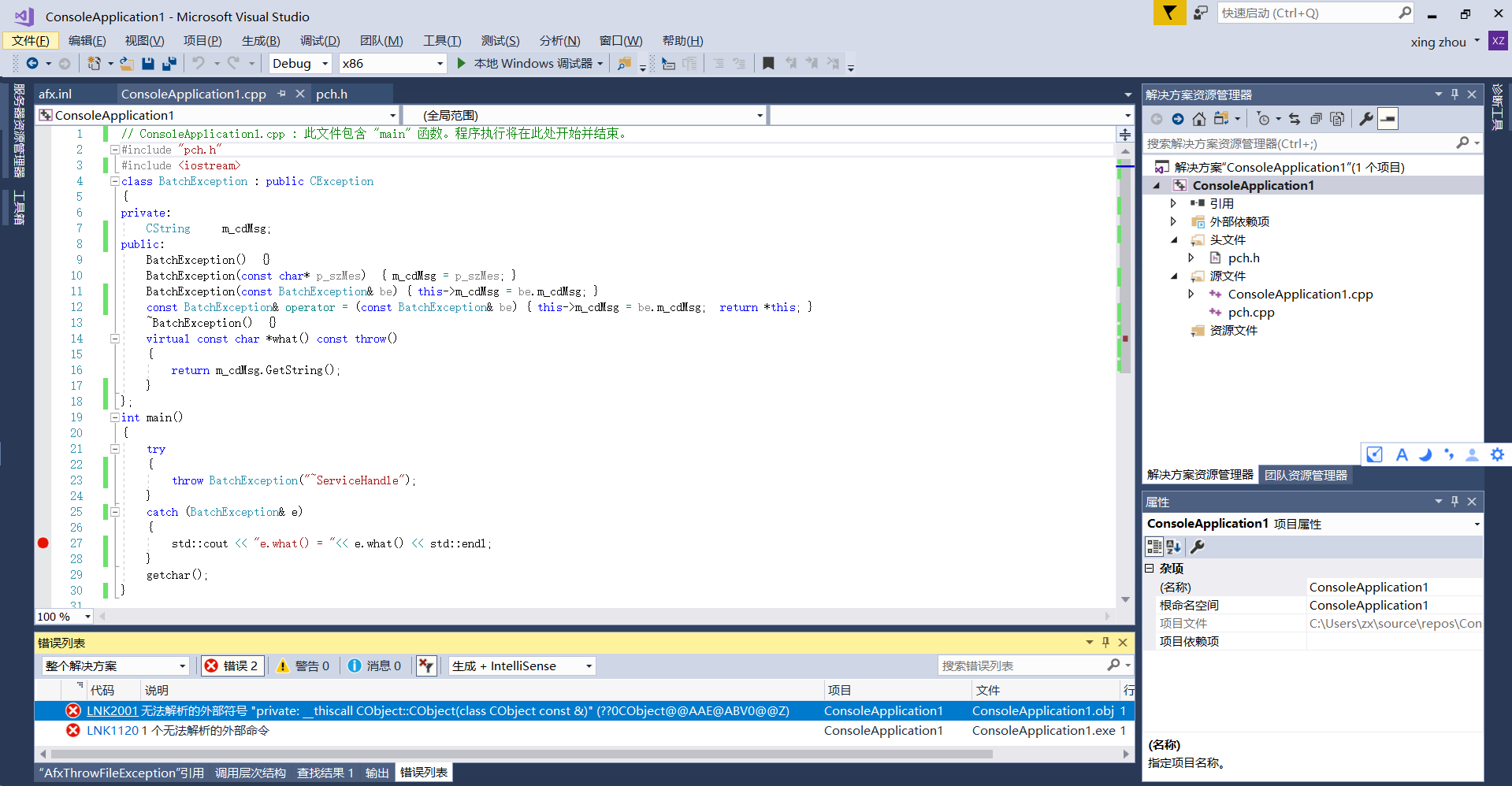65,207
社区成员
 发帖
发帖 与我相关
与我相关 我的任务
我的任务 分享
分享
void main()
{
CMyException tst("hello"), tst2;
// 没有问题
tst2 = tst;
// 报错
throw tst;
}
class CMyException : public CException
{
public:
CMyException() {}
CMyException(const CMyException& x) {
*this = x;
}
explicit CMyException(const char* szMsg) {}
~CMyException() {}
CMyException& operator=(const CMyException& x) {
return *this;
}
private:
};
class AFX_NOVTABLE CException : public CObjectclass AFX_NOVTABLE CException : public CObject